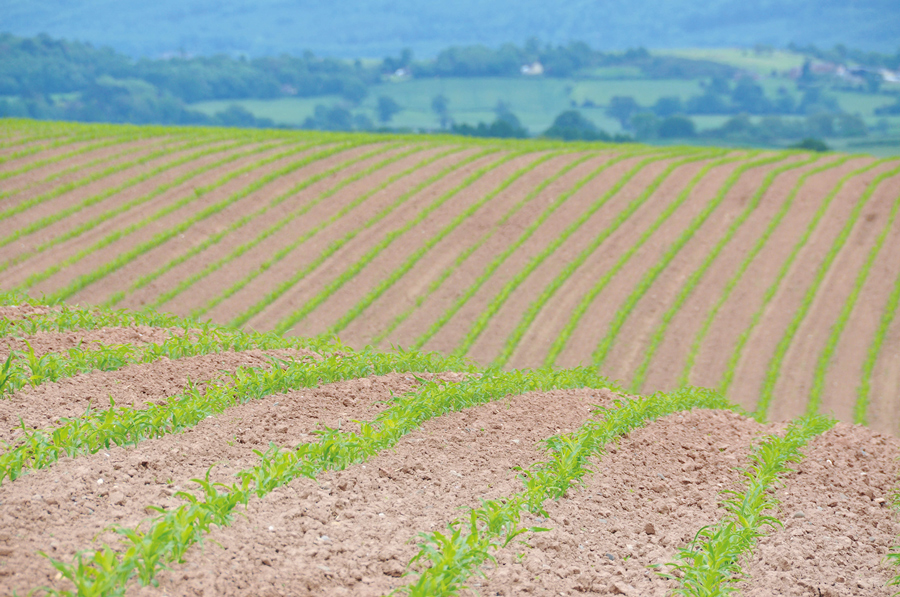Aiming for a weed-free start for maize
3rd May 2019
Growers should first check soil moisture before deciding whether to apply a pre-emergence herbicide, this year according to Syngenta technical manager, Georgina Wood.
Growers should first check soil moisture before deciding whether to apply a pre-emergence herbicide, this year according to Syngenta technical manager, Georgina Wood.
The spring weather across the UK has been very varied (at the time of writing in early April), with the eastern counties having very dry soils, while those counties further west have seen a lot more rain.
“There is a need for moisture management this year on both sides of the spectrum,” she says.
In some areas the ground is so dry that growers may even need to think about moving to post-emergence this year, she warns.
“It may also be necessary to roll seedbeds to retain some moisture – and if seed has not been treated, deeper drilling may be necessary.”
On the other hand, where there has been a lot of rainfall, while pre-emergence herbicides will be effective, care will be needed to ensure there is no run-off into watercourses.
“In either case, the most important strategy is to ensure that the crop gets up and away to compete against weeds.
“If you can, wait until just before drilling to prepare your seedbeds, and make sure the conditions are the best possible in the circumstances.”
Early as possible
Nevertheless, when conditions are right, taking weeds out as early as possible helps achieve the best possible yields. “The switch point, after which lost yield cannot be recouped, can occur as early as the four true-leaf stage of maize growth.
“If you are able to opt for pre-emergence treatment, it reduces the early weed burden, and gives growers far greater flexibility to tailor post-emergence treatments to specific field weed populations – before yield potential is compromised,” she advised.
Georgina pointed out that each crop’s specific ‘switch point’ for weed impact depends on factors including variety, seed rate, soil temperatures and the competitiveness of weed species. “But, as a rule, crops should be kept clean from 10–30 days post-emergence for optimum yields.
“Early weed competition also adversely affects the maize plants’ rooting capability,” she warned. “That would inevitably impinge its ability to utilise nutrients and, crucially after last season, increase drought susceptibility.
“Growers should be aware of changes in post-emergence herbicide options available over coming seasons,” she highlighted. “That is likely to increase reliance on pre-emergence Dual Gold (S-metolachlor), followed by tailored Callisto-based (mesotrione) post-emergence applications.”
Ms Wood also urges growers to ensure treatments are been applied using optimum techniques.
“Syngenta application trials for pre-emergence herbicides have demonstrated the importance of even spray distribution and the avoidance of drift,” she emphasised. “The research has shown the high levels of weed control that can be achieved with new 90% Drift Reduction technology nozzle design.
“The mantra to follow is Go Low; Go Slow and Get Covered, with application at no more than 50cm boom height, travelling at 12kph or less and using a water volume of 200-litres/ha.”
For post-emergence herbicides the 3D-Nozzle is advocated where conditions permit, but being prepared to change to an angled Amistar nozzle if drift is a concern.”
Alternative strategies
Maize growers will need to think of alternative strategies for effective weed control, says Cheshire-based Agrovista agronomist Phil Campion.
Relying on a one-hit post-emergence spray is going to be difficult, partly because of the loss of Calaris (mesotrione + terbuthylazine), the mainstay of post-emergence herbicides for maize, which is now in its last season of use.
With the loss of residual activity from Calaris, there will be more emphasis on a pre-emergence spray followed up by a well-timed post-emergence spray.
“It is really important to keep the field clean until at least the 6-leaf stage because if maize suffers any competition for moisture, nutrients or light, yield will take a hit.
“If you can use a pre-emergence herbicide it will buy you time to assess the weeds to target and tailor products accordingly, rather than going for a blanket spray at higher rates risking crop damage.
“Depending on your weed spectrum, you may want to go with 1,000g of pendimethalin as a holding spray,” he says, adding that those with more difficult weeds such as cranesbill, groundsel or charlock may wish to step up to a broader spectrum product including dimethenamid-p.
“Ensuring the best possible seedbed is prepared and seed is drilled at the correct depth, helps the crop get away as well as improving product efficacy.
“When a pre-emergence herbicide is used, there can more flexibility too, as post-emergence products can be held back in case there is a late flush of nightshade.
“Correct timing of the post-emergence herbicide application is critical, so make sure spray contractors have plenty of notice.
“A week’s delay can make a massive difference to weed size and therefore successful control so make sure if delayed to adjust rates where necessary.”

